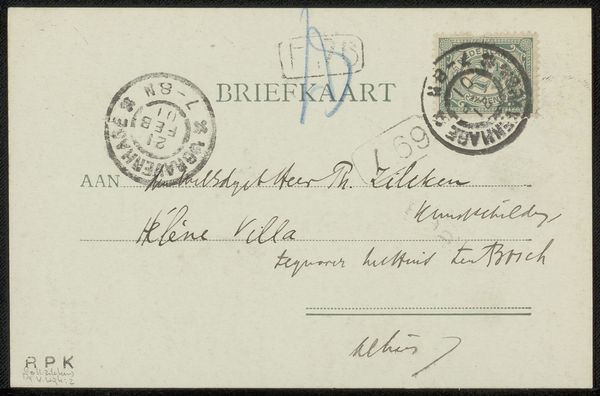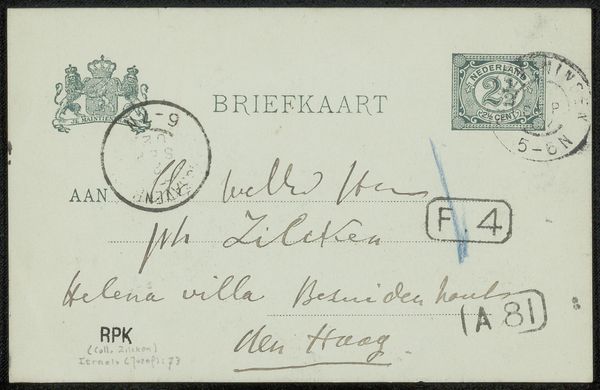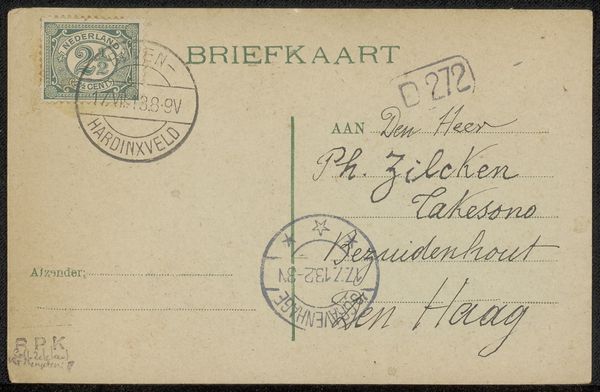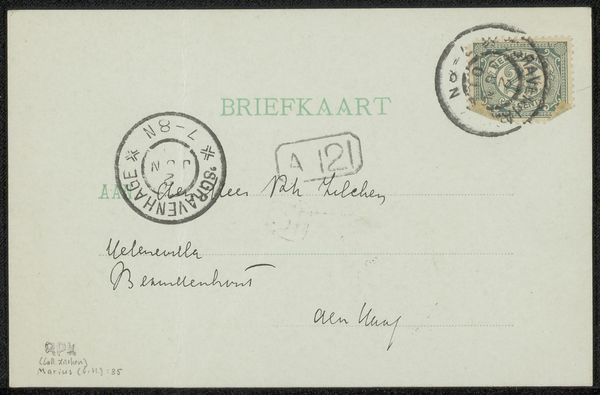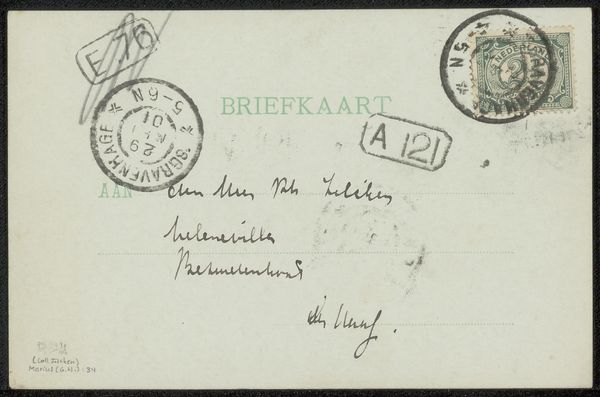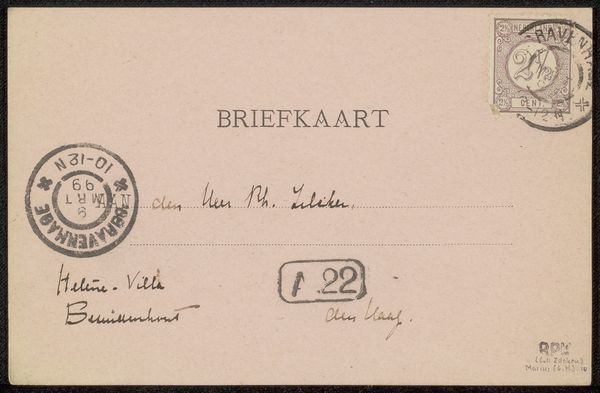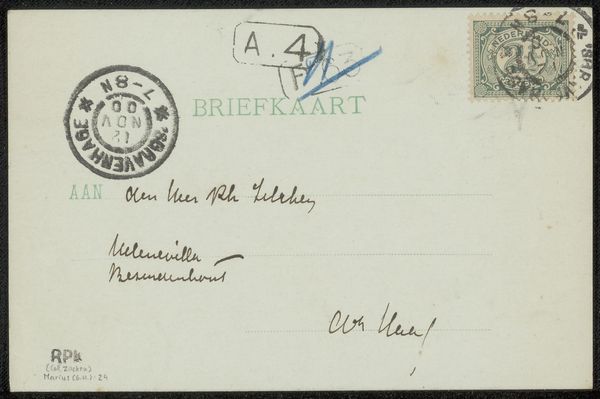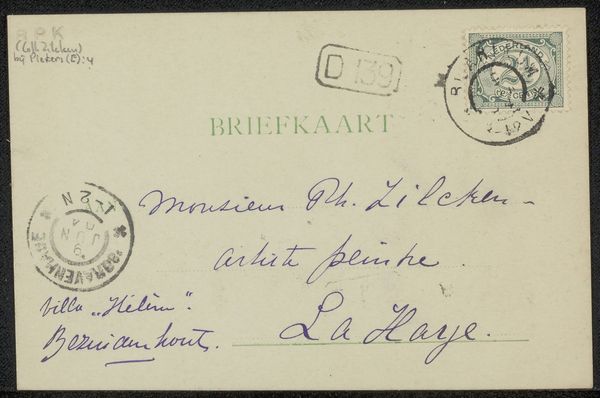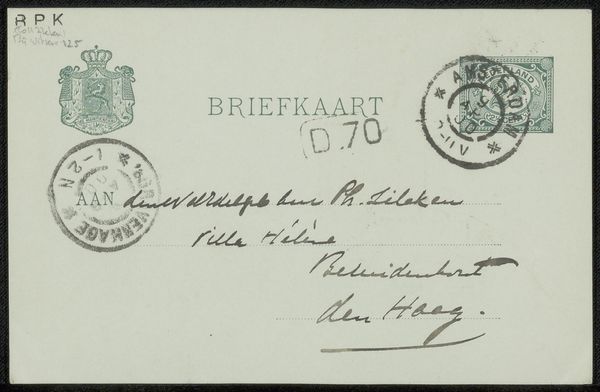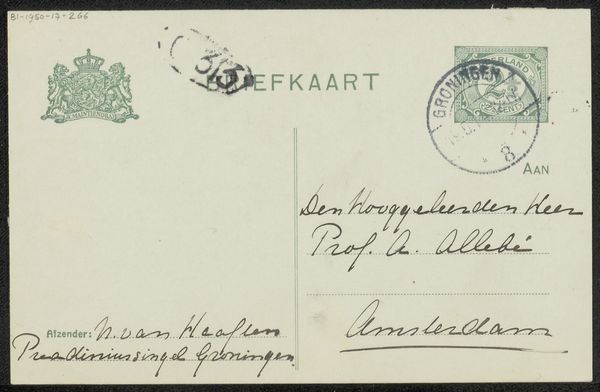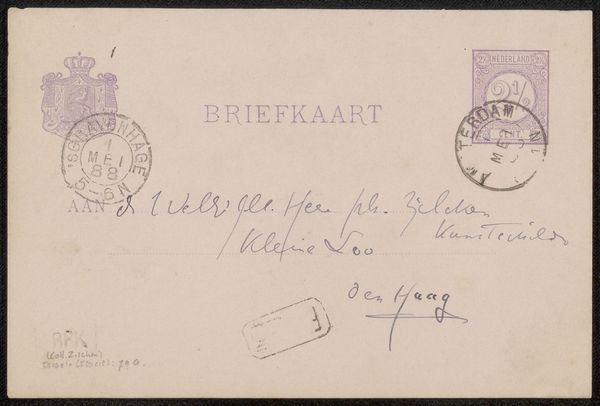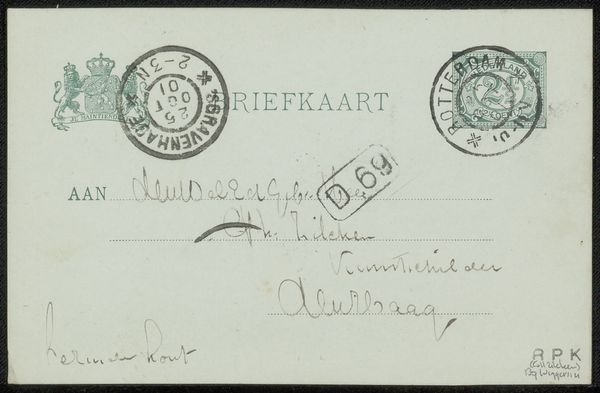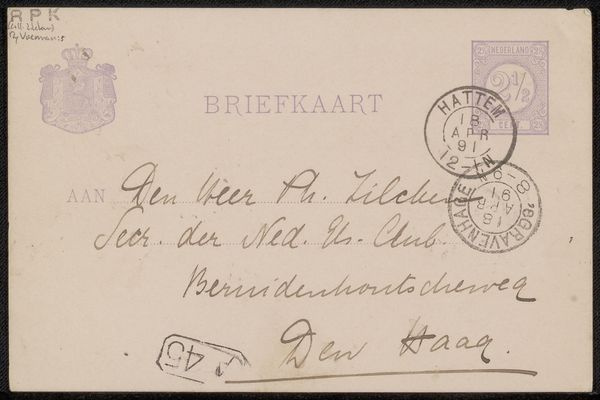
drawing, print, paper, ink
#
drawing
#
quirky sketch
# print
#
hand drawn type
#
paper
#
personal sketchbook
#
ink
#
idea generation sketch
#
ink drawing experimentation
#
pen-ink sketch
#
ink colored
#
sketchbook drawing
#
storyboard and sketchbook work
#
sketchbook art
Copyright: Rijks Museum: Open Domain
Curator: We're looking at "Briefkaart aan Philip Zilcken" here, created before 1929. It’s ink on paper, a quick study, maybe even a personal note. Editor: It's like peeking into someone's stream of consciousness, isn’t it? A snapshot of daily correspondence, almost archaeological. There’s something lovely and melancholic about seeing this fragile, fleeting artifact of a forgotten connection. Curator: Absolutely. Think about the act of handwriting—the deliberate strokes, the unique character embedded in each curve. Handwriting as artifact brings intimacy; the stamps are almost hieroglyphic, and each cancels a personal message on its journey. It’s the texture of memory, the faded ink a physical manifestation of time's passage. Editor: Exactly! The faded quality makes it dreamlike, blurring the distinction between document and art object. Do you think the "A.69" marking has some deeper symbolic weight? Maybe the address to "Melene Villa" too? Curator: Possibly. Numbering can carry archival importance. But it could equally point to a simple accounting detail from that moment in time, its significance lost now. Addresses signify real lives, physical presences that exist no longer. Editor: I keep thinking about the unseen exchange behind the card – what the sender’s concerns were or excitement that prompted the message. I love the immediacy it provides, so unburdened with the need to create some significant artistic object. The stamp even anchors the whole composition beautifully! Curator: I agree. It shows us that ephemera can function like powerful reliquaries of information—personal, yes, but reflective of their time in culture and economics as well. The franking privilege implied through these visual symbols can give insight into systems of its distribution and reception. Editor: Well, it definitely sparks a desire to unearth the sender’s other scribbles and jottings and get to know her a bit better. Thanks to this, she now speaks to me, as do many other of the forgotten senders out there. Curator: Indeed, an object meant to travel is grounded in its time, becoming more about context over its intended content. Thank you, it's provided me a wonderful, unique point of view today.
Comments
No comments
Be the first to comment and join the conversation on the ultimate creative platform.
